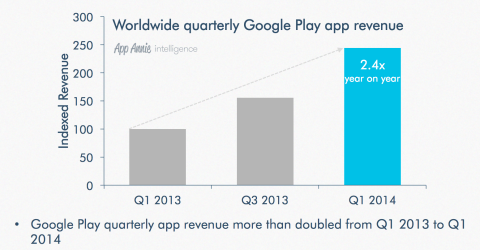

Despite app stores being crammed with messaging apps from WhatsApp to Viber and their many imitators, one app in particular has managed to stand out with a unique feature.
FireChat, released last week for the iPhone, is the only chat app that can be used without mobile phone reception.
FireChat makes use of a feature Apple introduced in the latest version of its iOS mobile software, iOS7, called multipeer connectivity.
This feature allows phones to connect to one another directly using Bluetooth, peer-to-peer WiFi or traditional Wi-Fi as an alternative to the Internet.
If you’re using FireChat, its “nearby” chat room lets you exchange messages with other users within 100 feet without sending data via your mobile network provider.
Micha Benoliel, CEO and cofounder of startup Open Garden, which made FireChat, says the app shows how smartphones can be set free from cellular networks.
He hopes to enable many more Internet-optional apps with the upcoming release of software tools that will help developers build FireChat-style apps for iPhone, or for Android, Mac, and Windows devices.
“This approach is very interesting for multiplayer gaming and all kinds of communication apps,” says Benoliel.
Analysts claim that FireChat is the only app that’s been built to make use of multipeer connectivity, perhaps because the feature remains unfamiliar to most Apple developers.
The new feature of iOS7 currently only supports data moving directly from one device to another, and from one device to several others.
However, Open Garden’s forthcoming software will extend the feature so that data can hop between two iPhones out of range of one another via intermediary devices.
Apps built to exploit such device-to-device schemes can offer security and privacy benefits over those that rely on the Internet. For example, messages sent using FireChat to nearby devices don’t pass through any systems operated by either Open Garden or a wireless carrier (although they are broadcast to all FireChat users nearby).
That means the content of a message and metadata cannot be harvested from a central communications hub by an attacker or government agency.
However, peer-to-peer and mesh networking apps also come with their own risks, since an eavesdropper could gain access to local traffic just by using a device within range.
FireChat may seem limited on a practical level – it begs the question: why would you message someone who is so physically close to you? Although we have personally done it, but can’t say we would do it frequently enough to bother downloading an app designed for just that.
There are, however, instances where its practical use can be justified. Music festivals, for example, where you may not be able to connect to any nearby networks but need to message your friends.
Practicalities aside, FireChat’s format opens up a world of possibilities for communications and (particularly) gaming. Without sounding too excited, this may be the start of a social mobile revolution. Okay, maybe we’re getting a bit carried away.
What do you think? Is Firechat an app that you will download? And how else would you like multipeer connectivity to be used?
UPDATE: FireChat’s latest update now enables users on iOS to communicate with those on Android, and vice-versa. Pretty clever eh? In fact, it’s so clever that the guys at FireChat are unwilling to reveal exactly how they do it, only saying that peer-to-peer Wi-Fi and personal Bluetooth area networks are involved.
Something they did reveal is that in the near future they’re planning to release an SDK so that third-party apps can make use of their highly-sought after technology. The potential for this is mouthwatering, so we’ll be sure to keep you up to date with any and all related developments.






